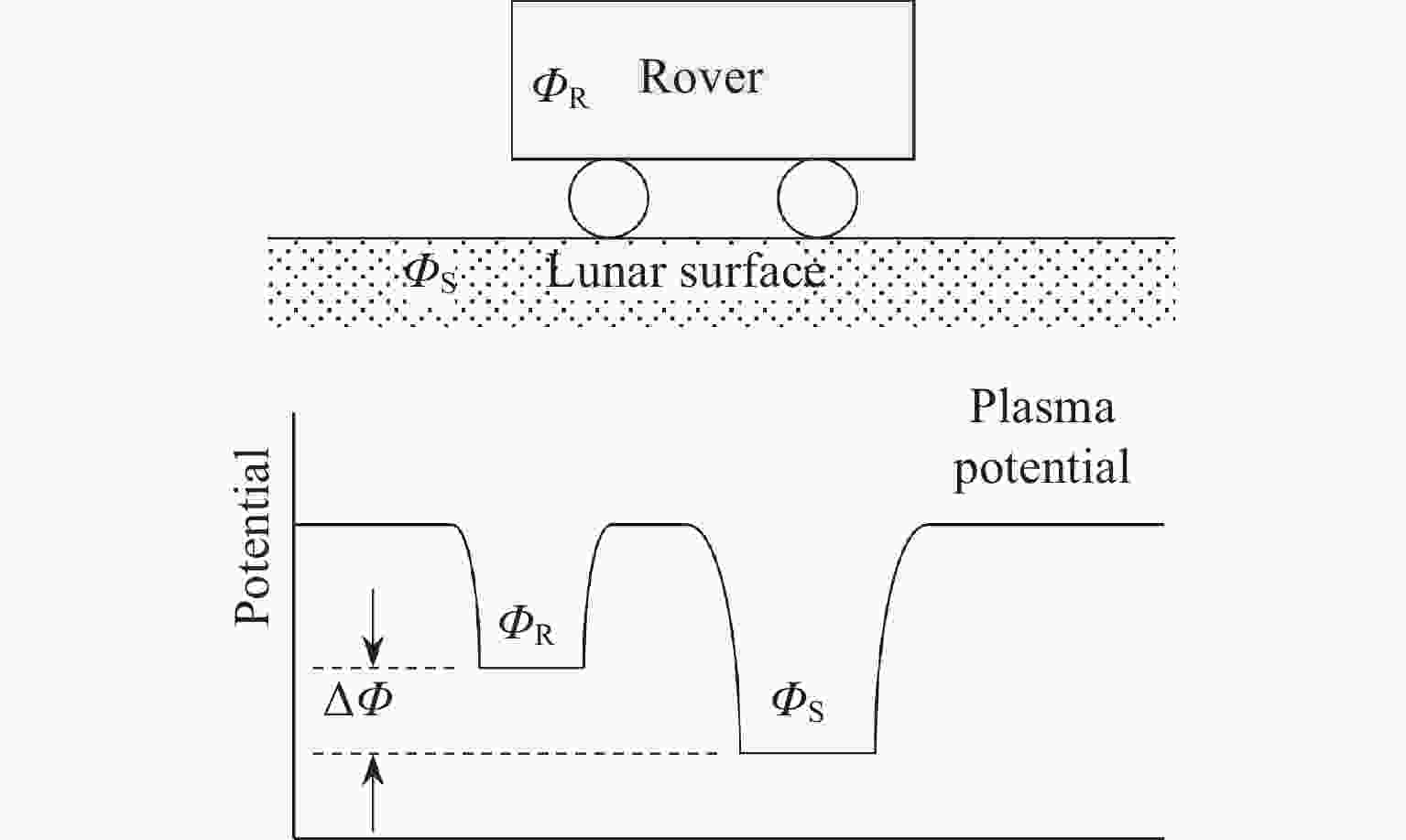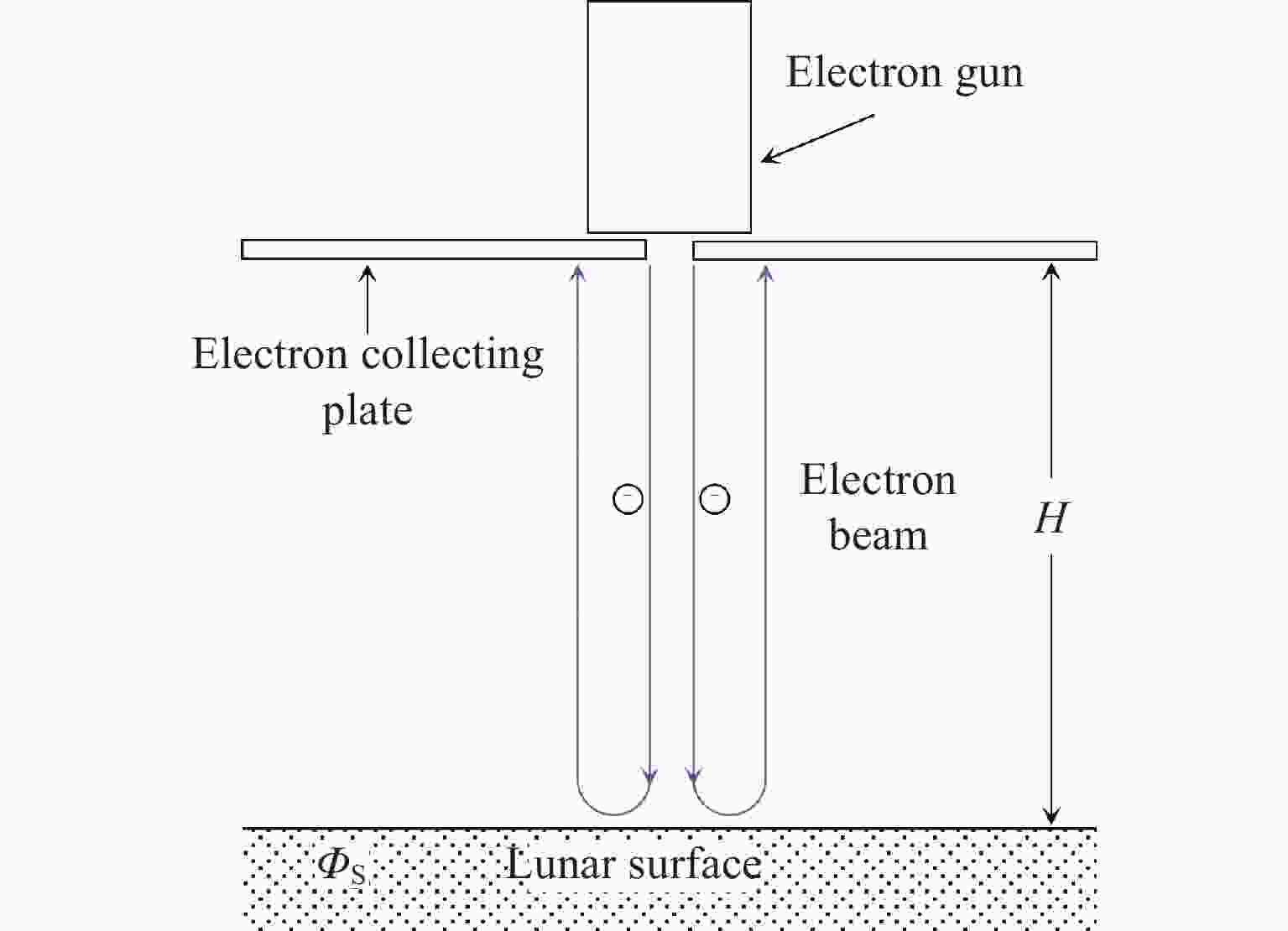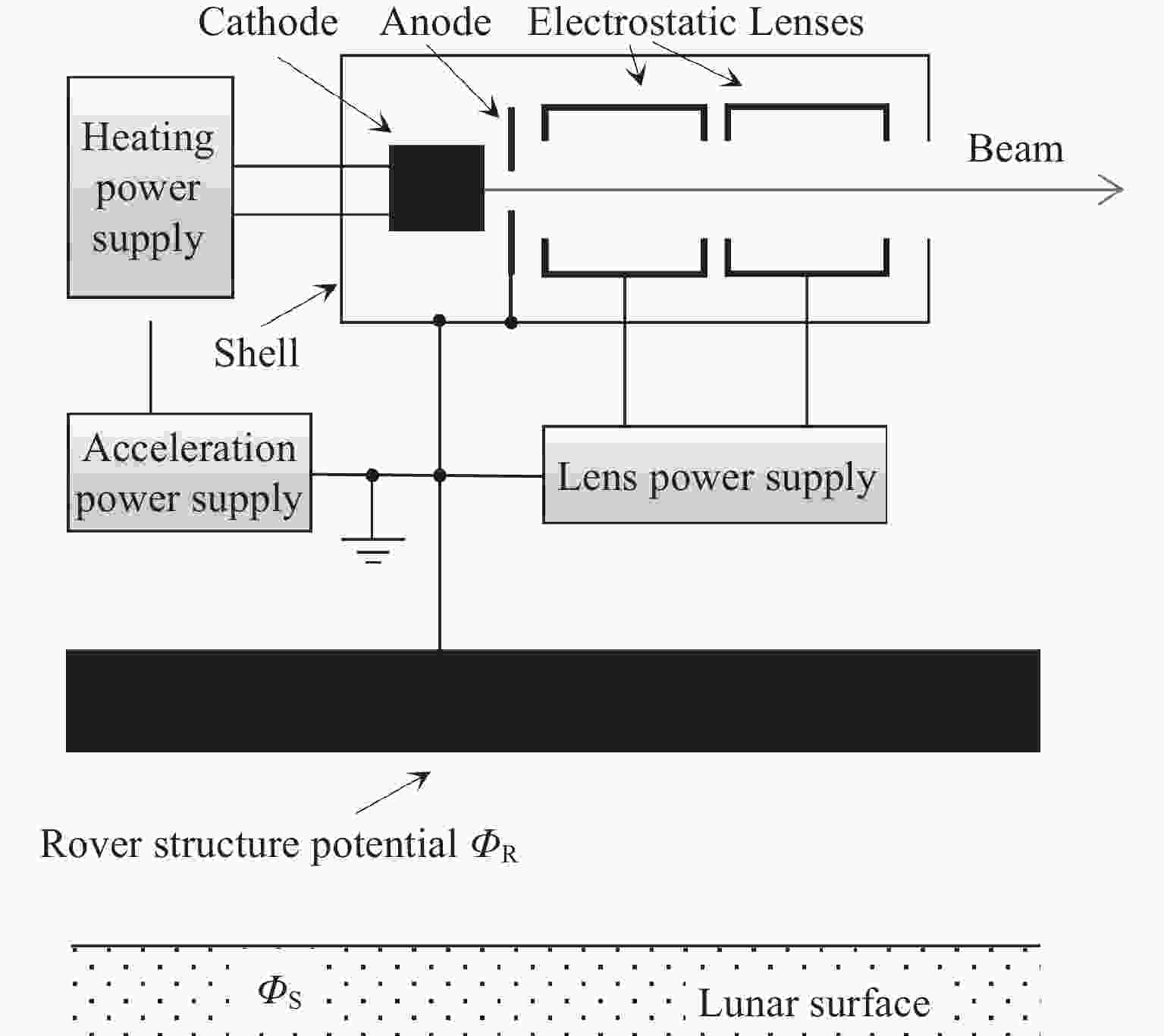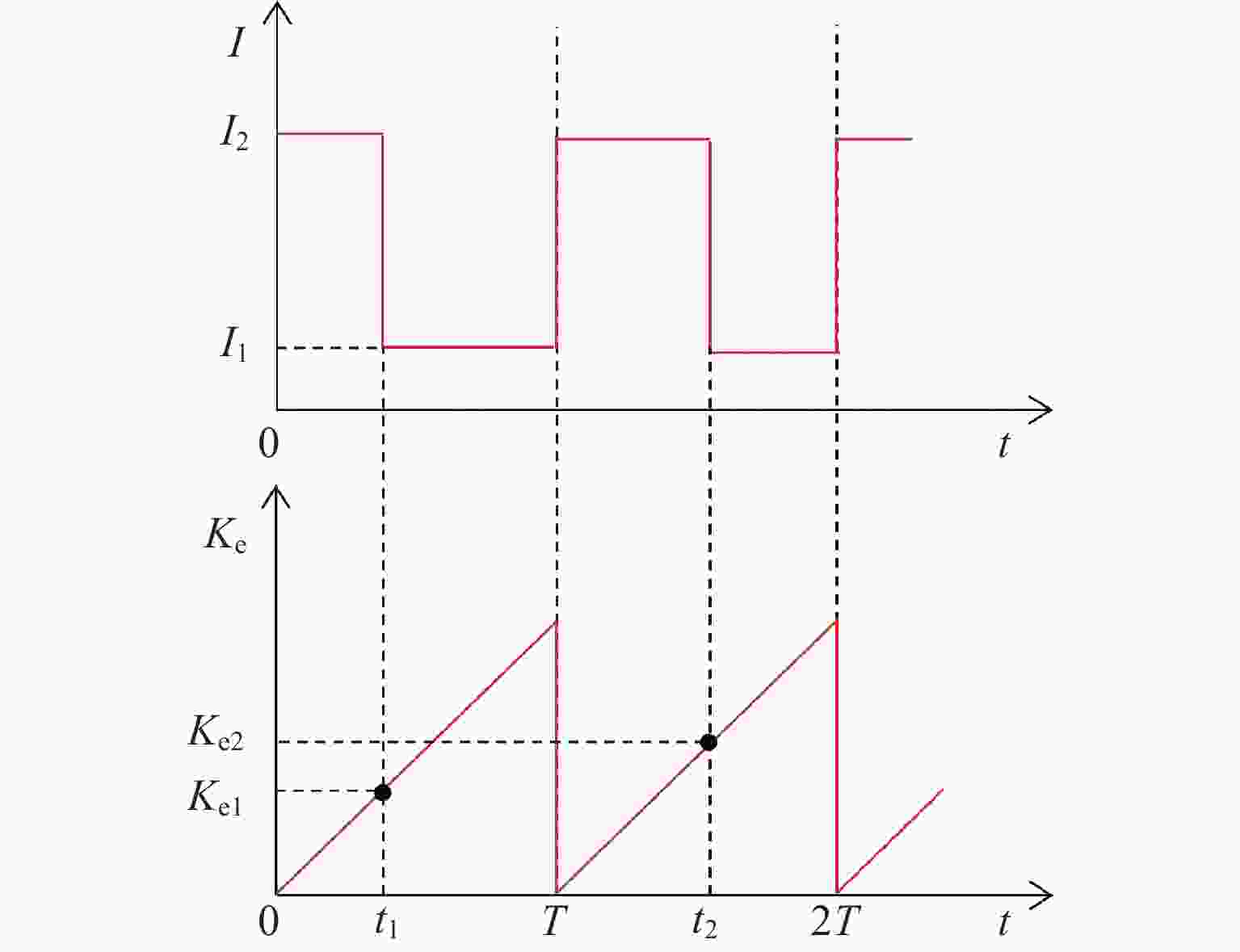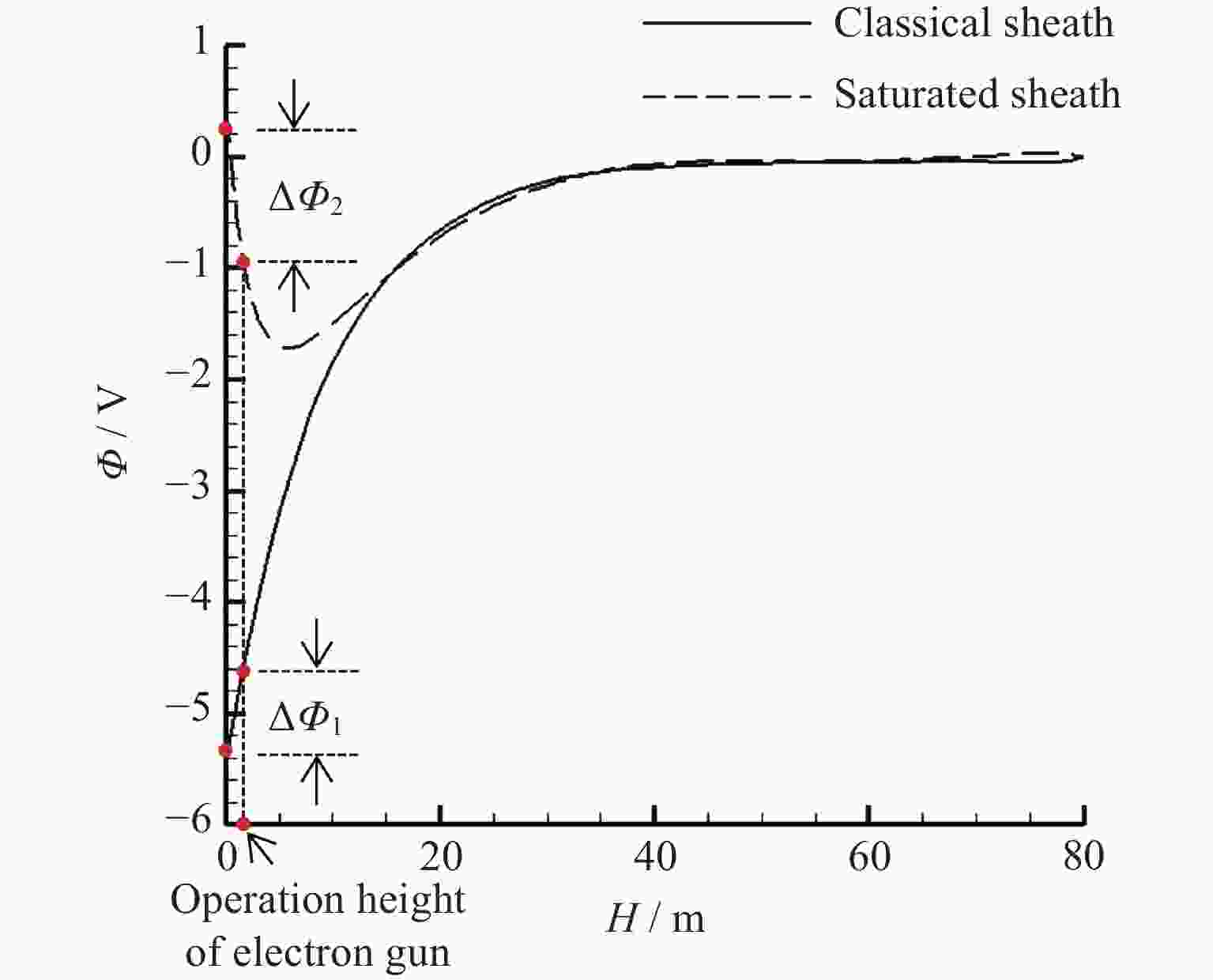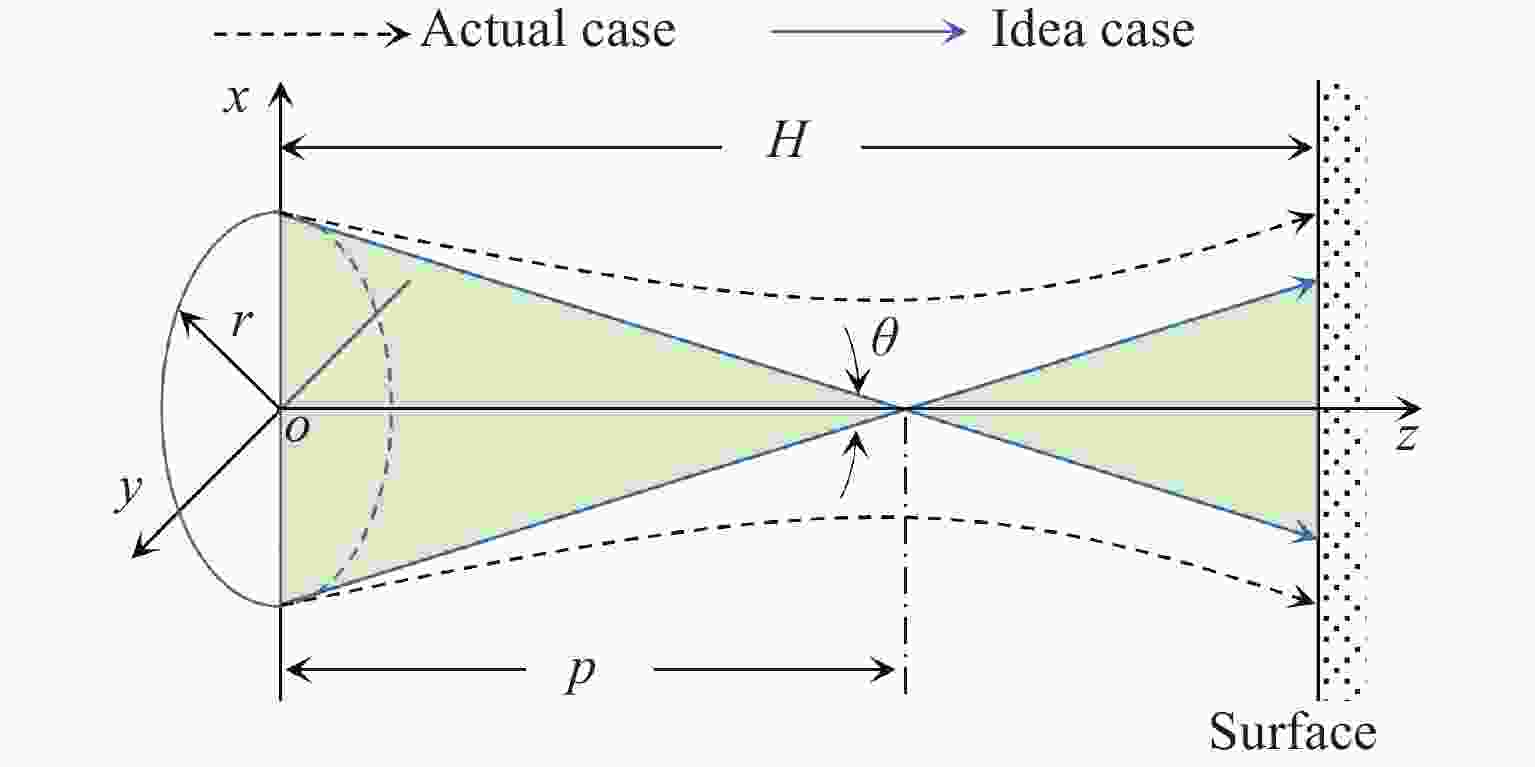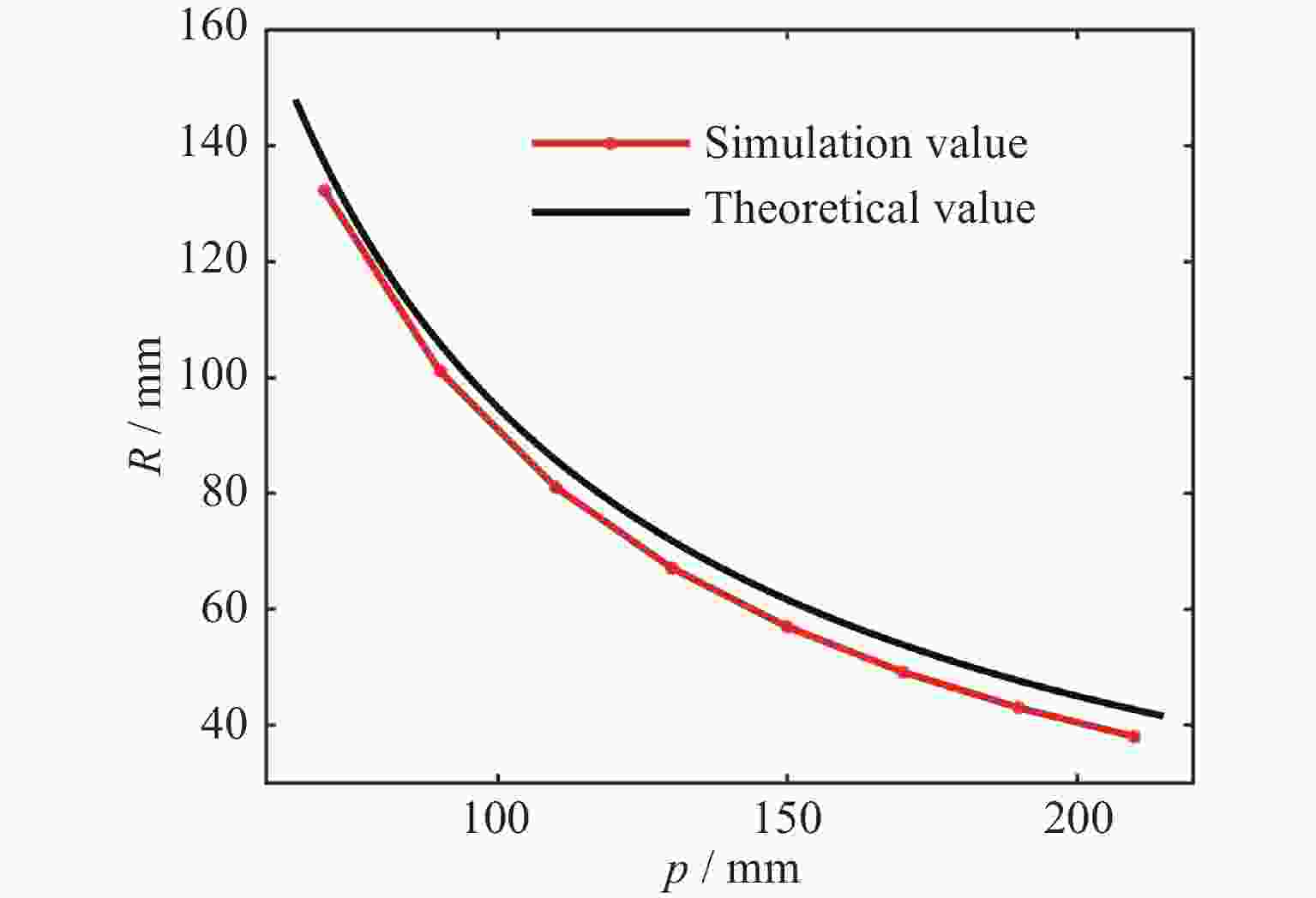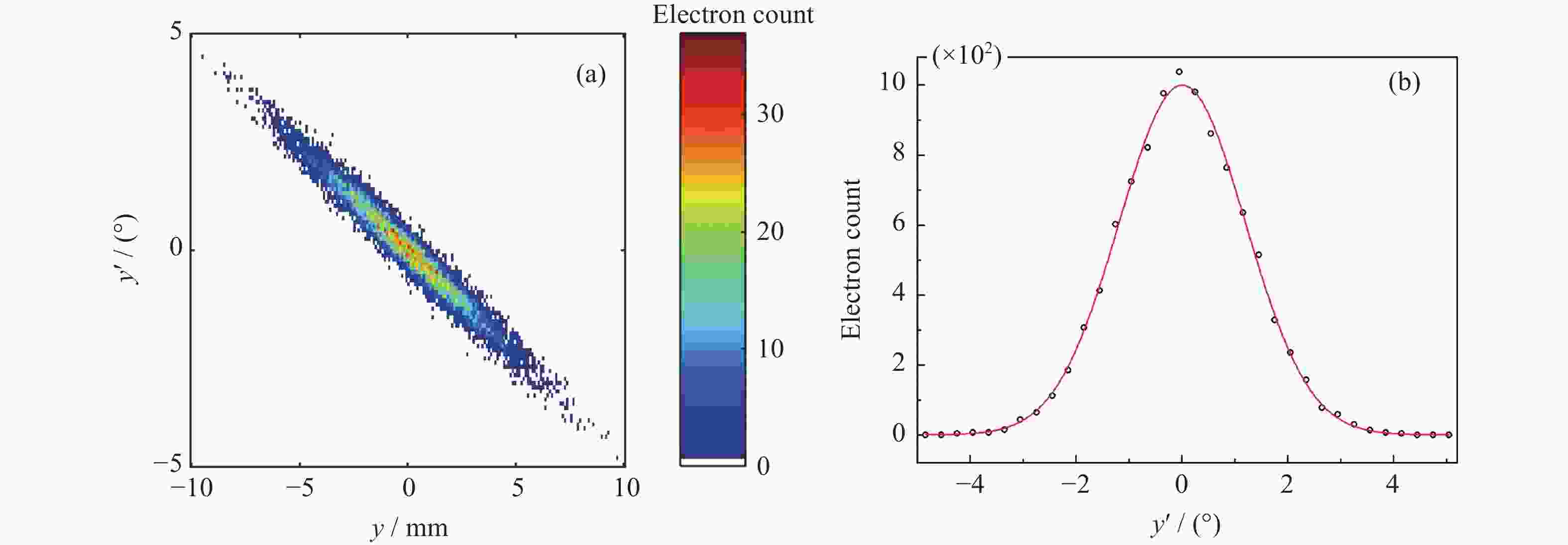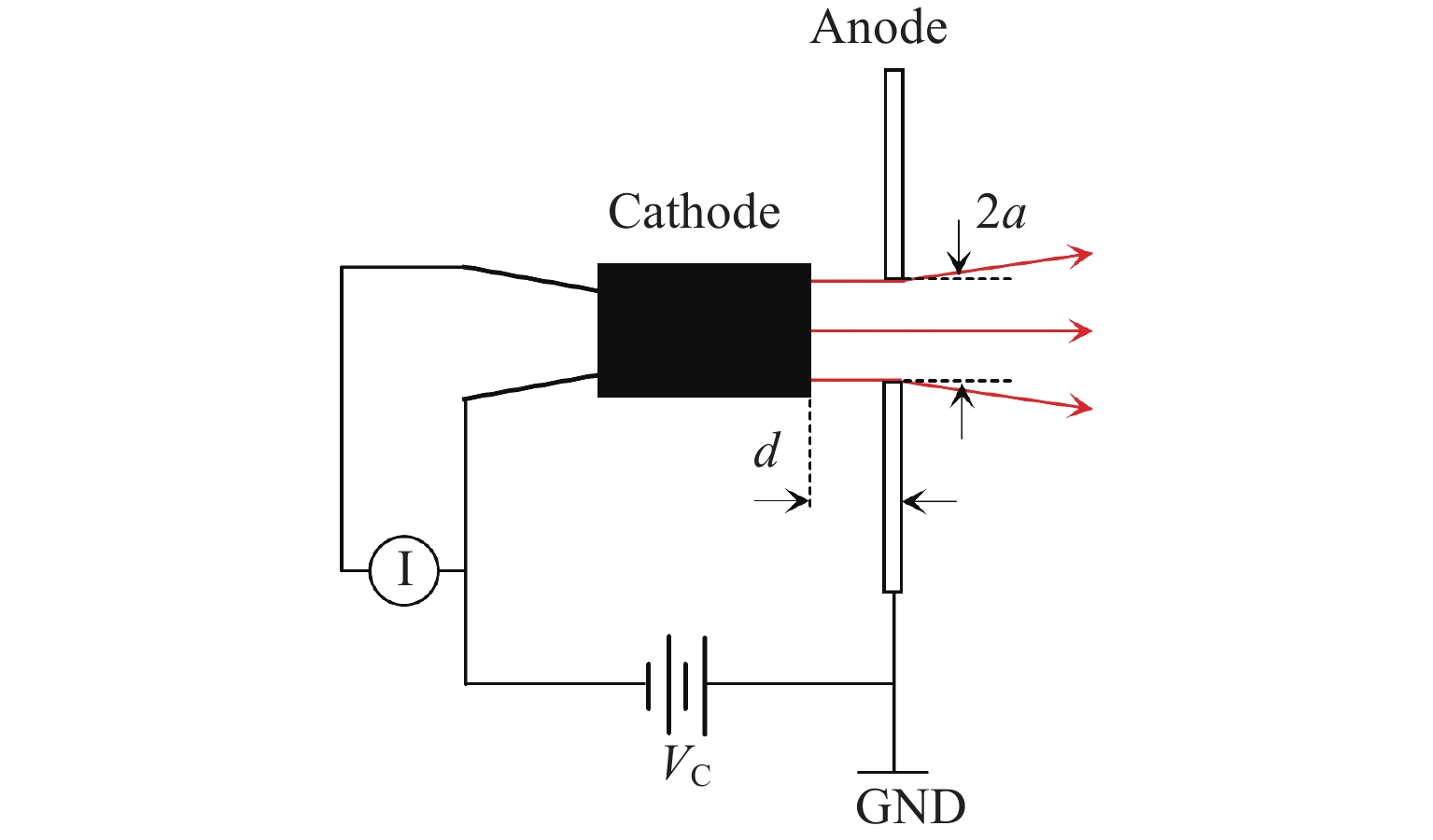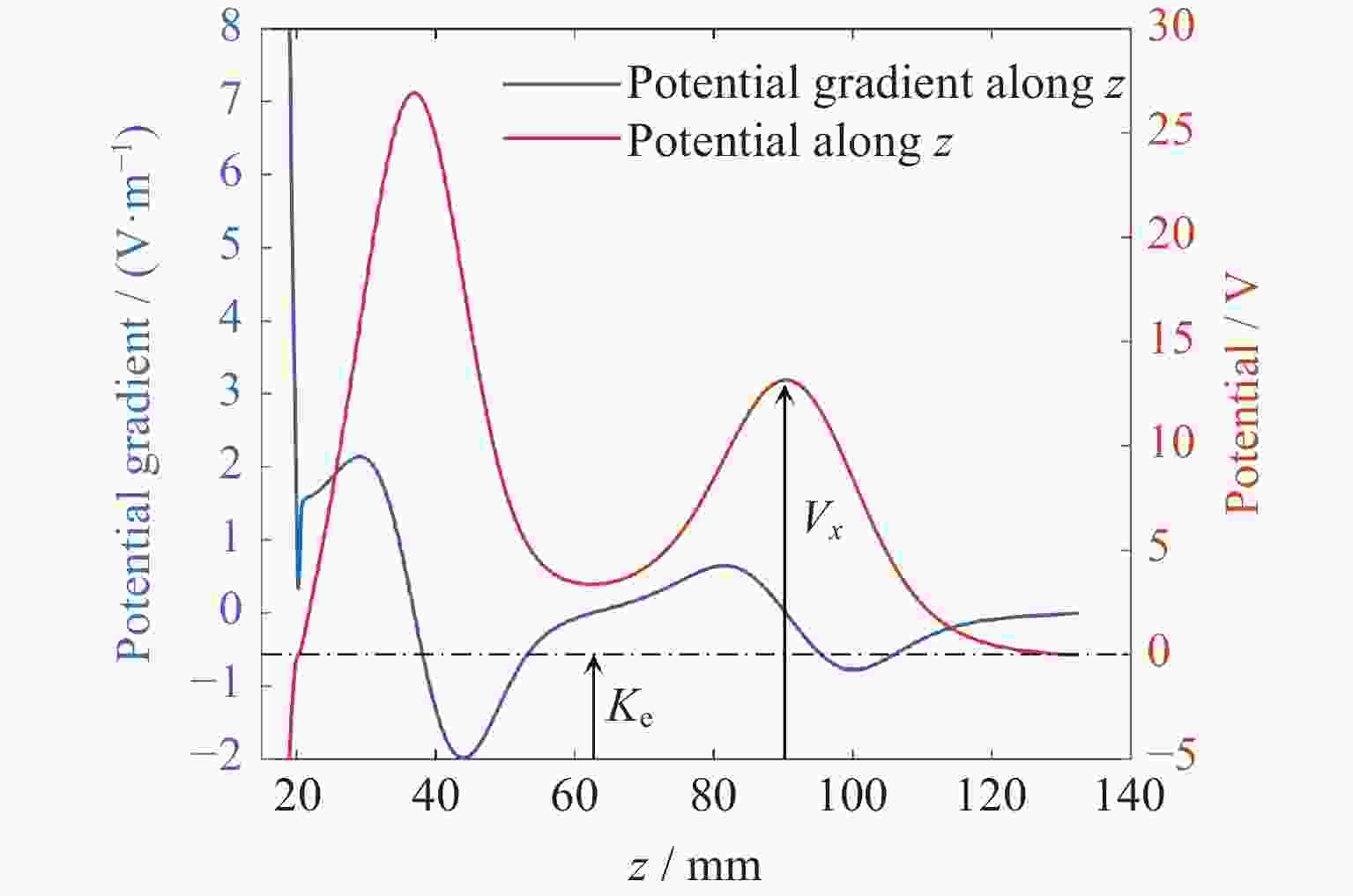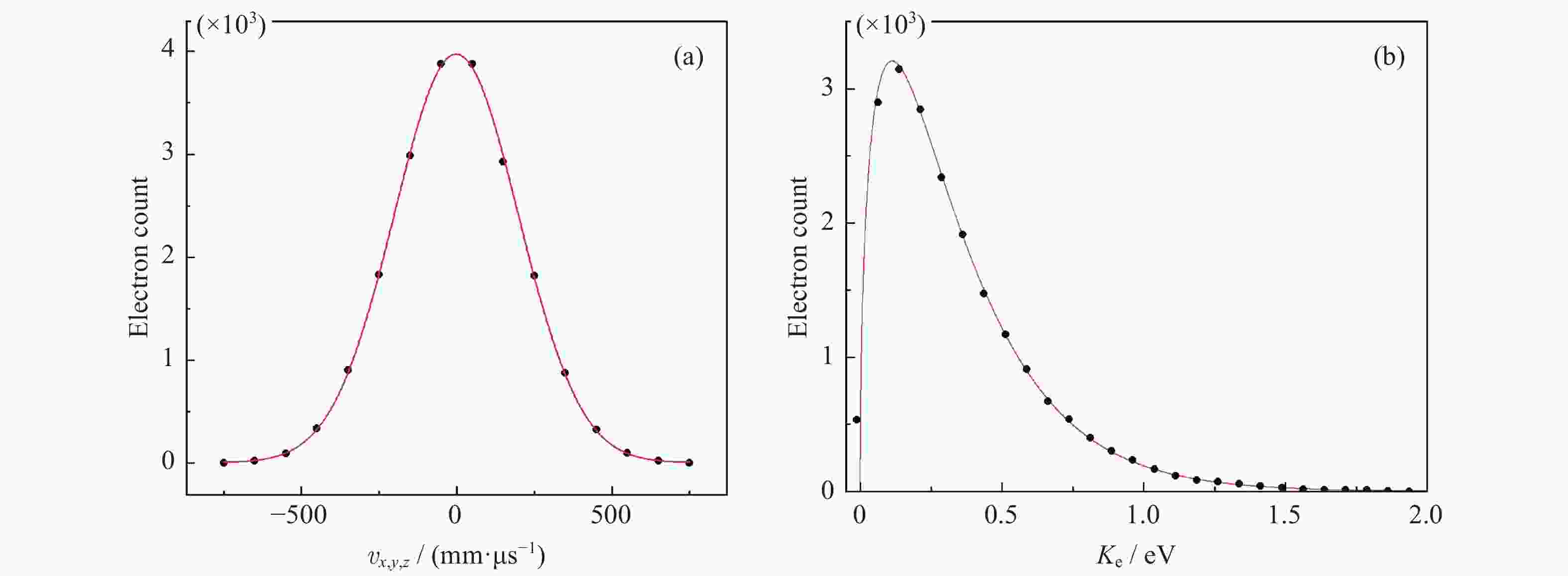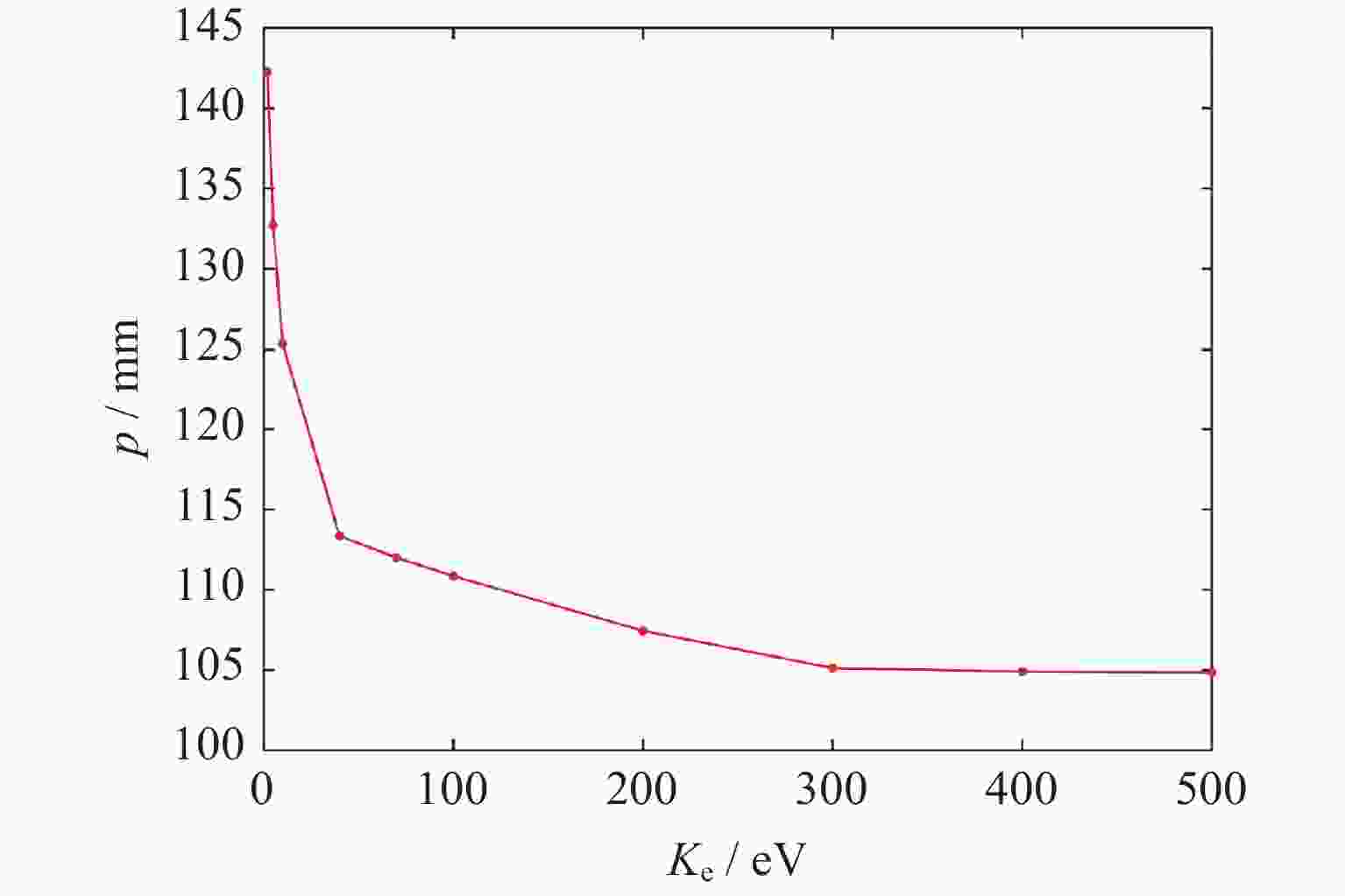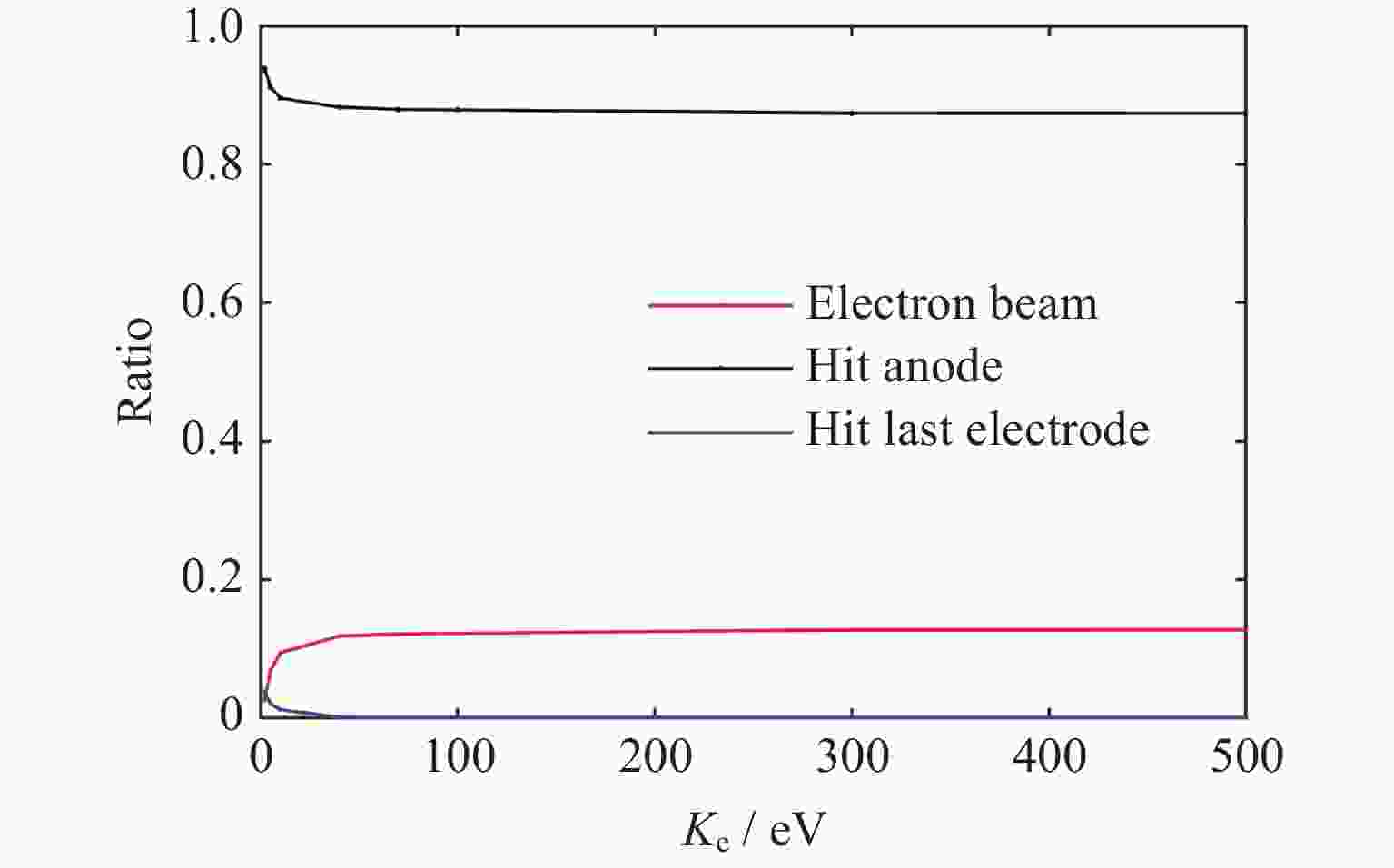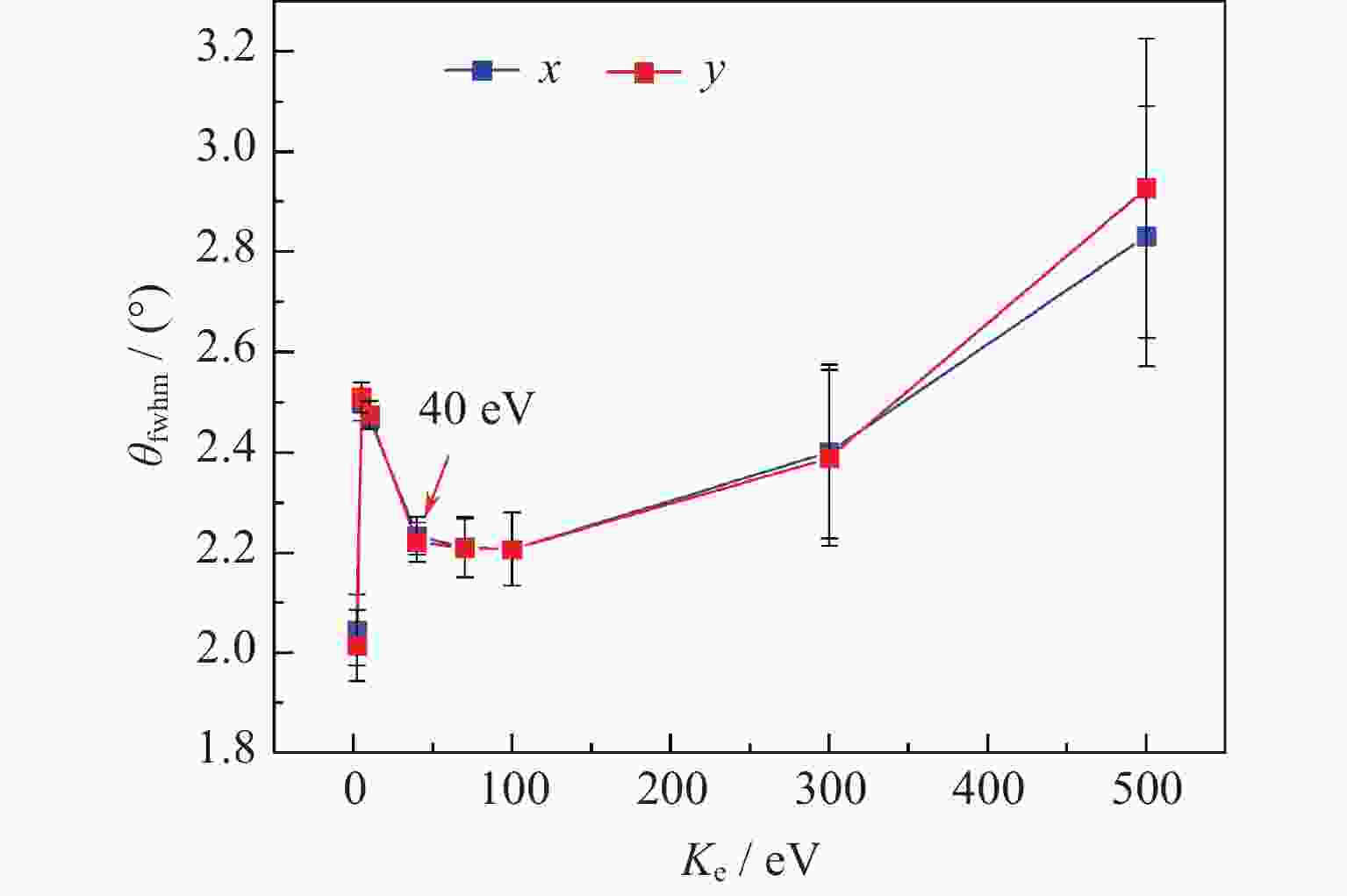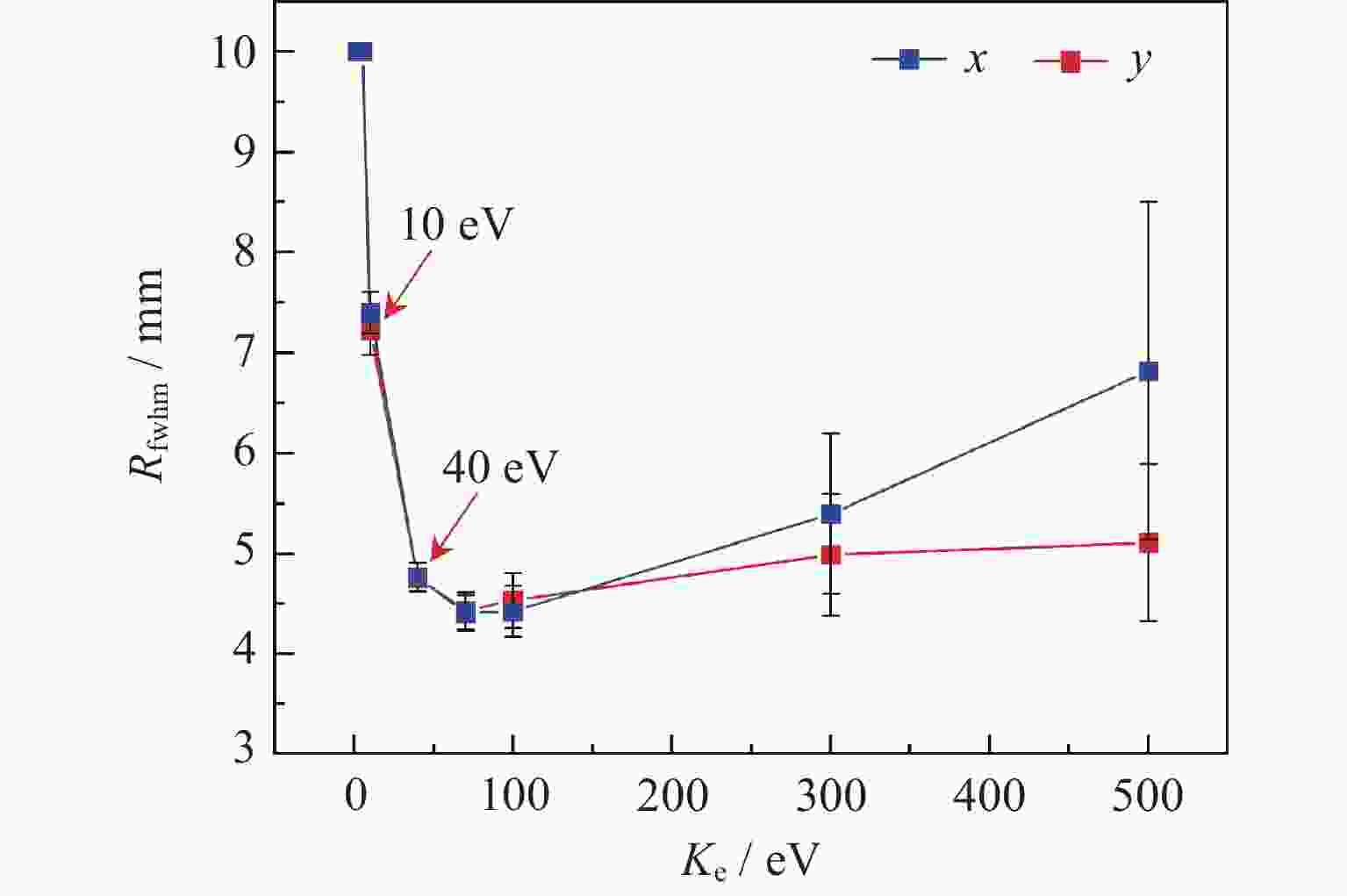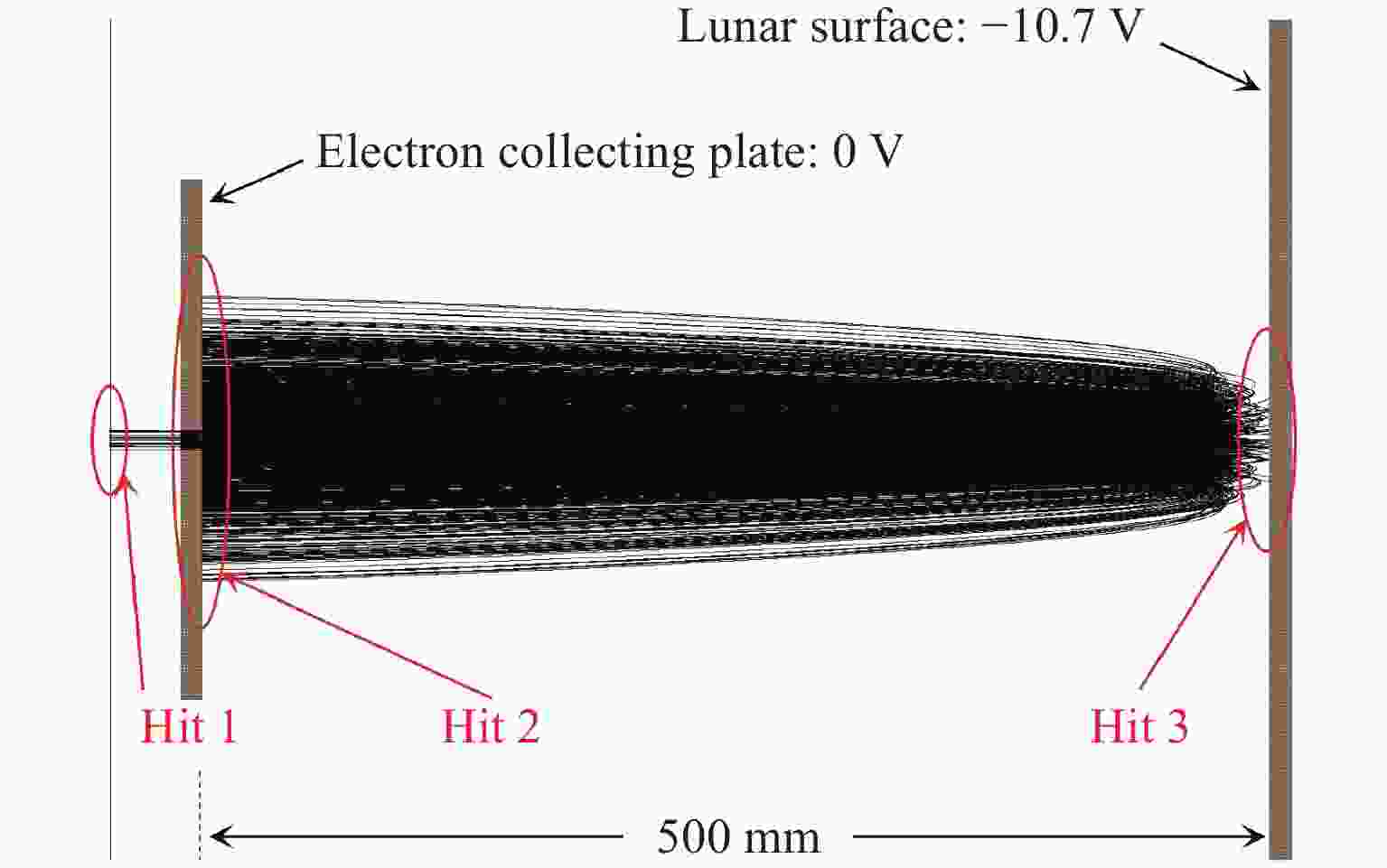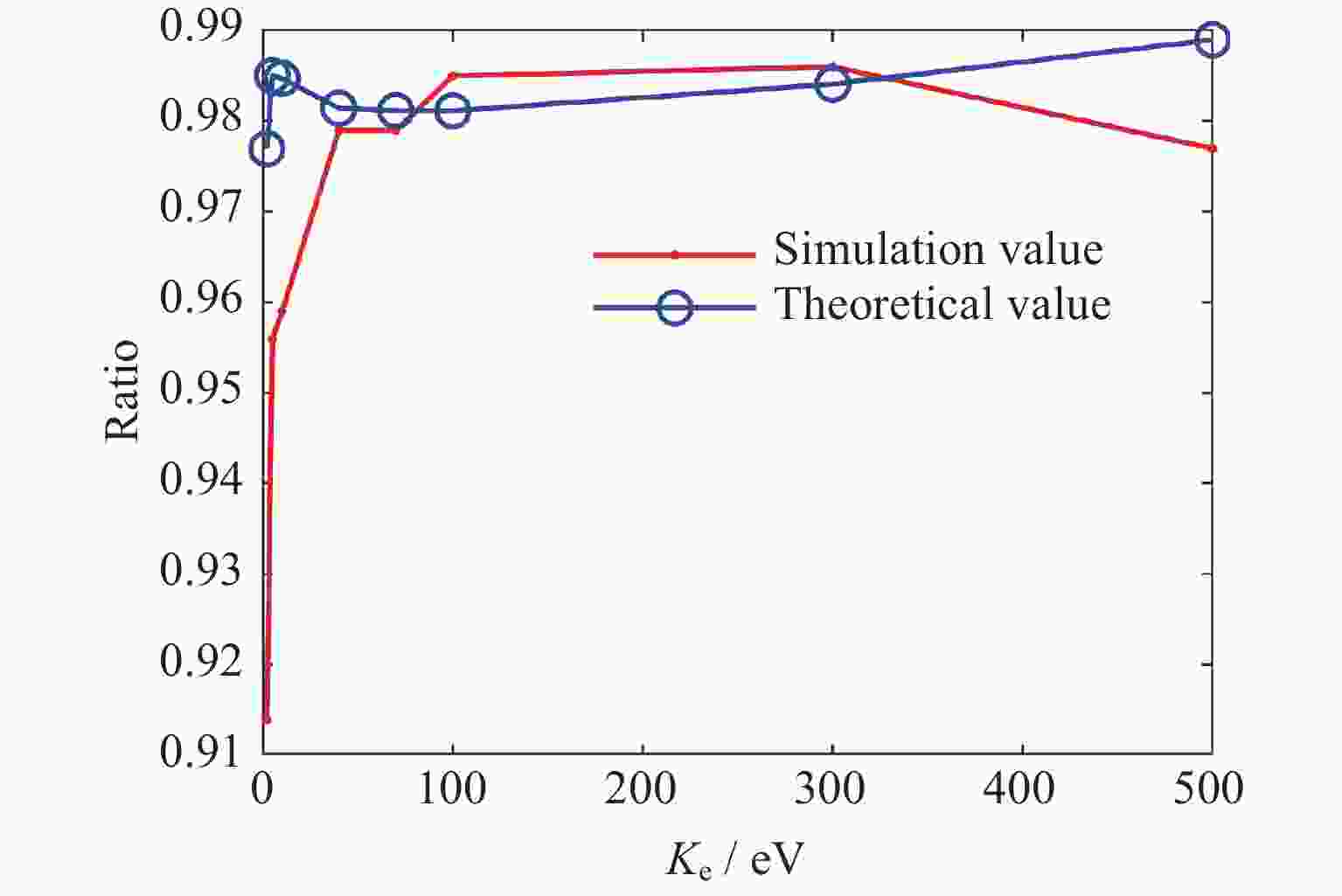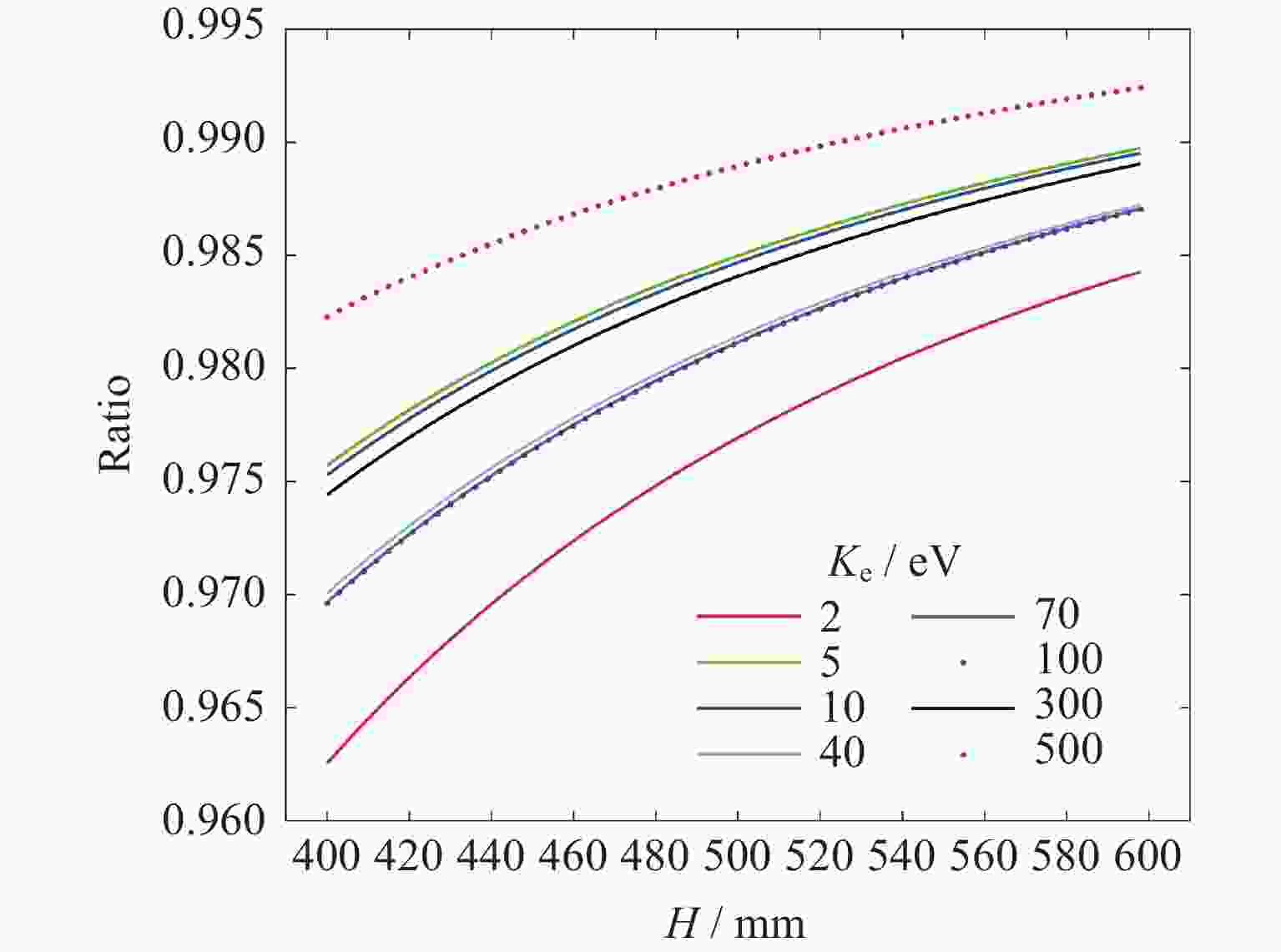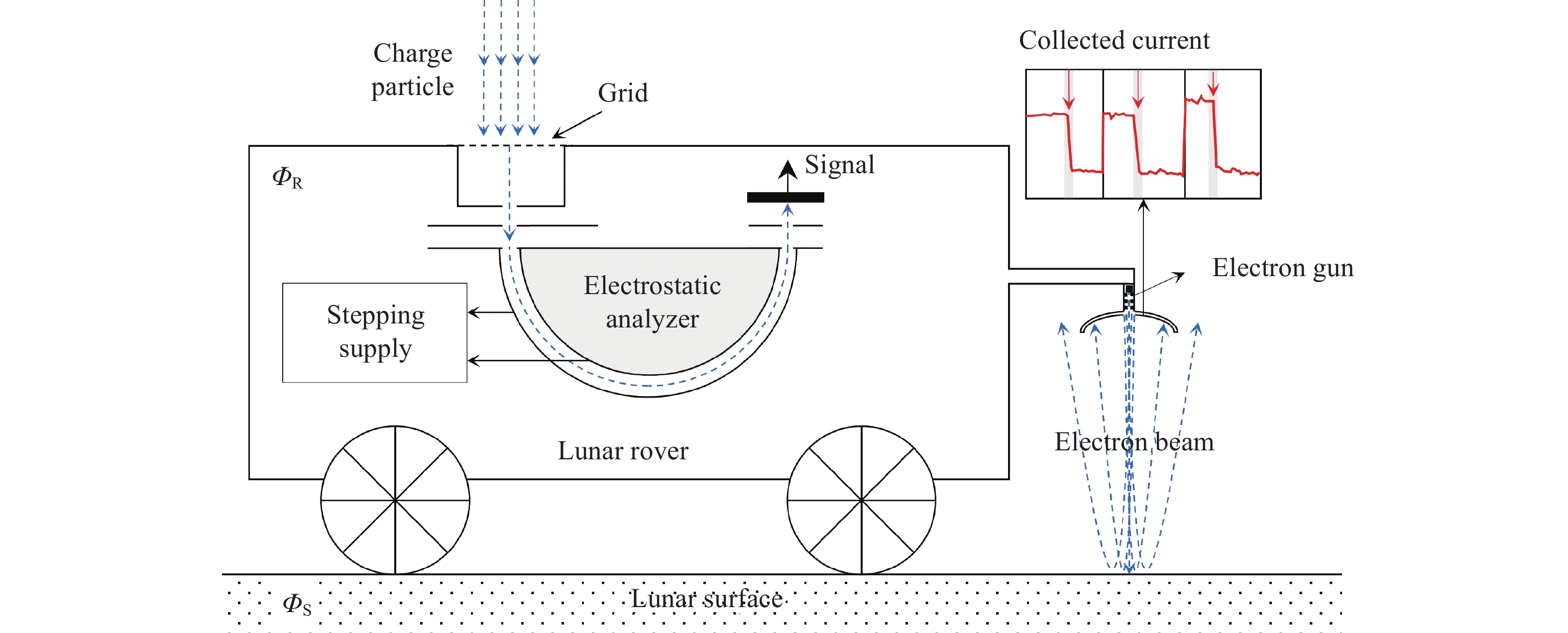Research on a Low Energy Tele-focus Electron Gun
-
摘要: 针对可移动非接触式月球表面电位探测器的电位无扰动测量单元对低能远焦电子束的需求,设计了低能远焦电子枪。以平板二极管电子枪为电子源,匹配两个静电聚焦透镜,将电子源引出的发散电子束聚焦为需要的形状,并加速至所需能量。优化电子枪的几何参数以及施加在电极上的电位,电子枪引出的电子束能量在5~500 eV内,并且具有良好的电子光路特性。电子束能量为5 eV时,初始半径r为5 mm,束腰至电子枪出口的距离p约为133 mm。随着能量增加,r逐渐减小至500 eV时的3 mm左右,p逐渐减小至105 mm。电子束经月球表面电场反射被电子收集平极接收,仿真数据和理论分析结果均表明,电子枪的工作距离为400~600 mm,平板接收的电子占发射电子比例在96%以上。电子枪结构质量仅408 g,满足探测器对电子枪的质量需求。Abstract: A low energy tele-focus electron gun is designed based on a subsystem of movable non-contact lunar surface potential detector. The electron gun consists of a diode extraction source and two three-element electrostatic lenses. The source produces a divergent beam which is then accelerated to energy Ke by lenses, and is focused into the shape of interest. By optimizing the geometric parameters of electron gun and the voltage applied to electrode, the electron beam has good optical characteristics and the electron energy is adjustable from 5 eV to 500 eV continuously. The initial radius r equals to 5 mm, and the distance p from the output electrode to the beam waist equals to 133 mm when the beam energy is 5 eV. As the beam energy increases to 500 eV, initial radius r decreases to 3 mm, and the distance p decreases to 105 mm. The electron beam reflected by lunar electric field is received by the collector plate. When working length H is between 400 mm and 600 mm, the electrons received by plate account for more than 96% of the beam electrons. The mass of the electron gun is only 408 g, which can meet the requirements of electron guns for lunar exploration.
-
图 7 月球表面电位测量电子束光路(r为电子束的初始半径,p为束腰到电子枪出口的距离,H为电子枪的工作距离,θ为电子束收敛全角。蓝色箭头为理想状态下电子束的外轮廓,黑色虚线箭头为实际情况下电子束的外轮廓)
Figure 7. Electron optical diagram for measuring the lunar surface potential (r is initial radius of electron beam, p is distance from output electrode to beam waist, H is working length, and the θ is full angle of beam convergence. The blue arrow represents the outline of the ideal electron beam, and the black dashed arrow represents the outline of the electron beam in practice)
图 18 电子束收敛全角的半高全宽。蓝色曲线为电子枪出口处电子束在x方向的收敛角,红色曲线为电子枪出口处电子束在y方向的收敛角
Figure 18. Full width at half-maximum of the beam convergence angle. The blue curve is the convergence angle of the electron beam in the x direction at the exit of the electron gun, and the red curve is the convergence angle of the electron beam at the exit of the electron gun in the y direction
表 1 各电极的电压设置(电子束能量为Ke,电压为相对于阴极电压的测量值)
Table 1. Voltages applied to electrode, where electron beam energy equals to Ke, and the operating voltages are referred to the cathode voltage
Electrode Aperture diameter /mm Potentials /V Cathode - –Ke A 0.5 0 B 20 0.5 Ke C 20 10.25 Ke D 20 0 E 30 0.5 Ke F 30 4.4 Ke G 30, 10 0 表 2 月球表面各区域的电子、离子、次级电子以及光电子电流
Table 2. Electron, ion, secondary electron, and photoelectron currents density in various regions of the lunar surface
Current density/(A·m–2) Day Term Night Crater Far edge $j_{\rm{e}} $ 1×10–6 3.52×10–8 4×10–10 5.1×10–10 1.6×10–8 $j_{\rm{i}} $ 3.2×10–7 3.52×10–8 4×10–10 1.6×10–11 7.5×10–9 $j_{\rm{s}} $ 0 0 4×10–11 5×10–10 4×10–9 $j_{\rm{p}} $ 4×10–6 0 0 0 0 -
[1] WALTON O R. Adhesion of Lunar Dust[R]. Livermore, CA: Grainflow Dynamics Inc. , 2007 [2] ÖPIK E J, SINGER S F. Escape of gases from the Moon[J]. Journal of Geophysical Research, 1960, 65(10): 3065-3070 doi: 10.1029/JZ065i010p03065 [3] GROBMAN W D, BLANK J L. Electrostatic potential distribution of the sunlit lunar surface[J]. Journal of Geophysical Research, 1969, 74(16): 3943-3951 doi: 10.1029/JA074i016p03943 [4] MANKA R H. Plasma and potential at the lunar surface[M]//Photon and Particle Interactions with Surfaces in Space. Noordwijk, the Netherlands: Springer, 1973: 347-361 [5] FREEMAN J W, IBRAHIM M. Lunar electric fields, surface potential and associated plasma sheaths[J]. The Moon, 1975, 14(1): 103-114 doi: 10.1007/BF00562976 [6] HALEKAS J S, DELORY G T, BRAIN D A, et al. Extreme lunar surface charging during solar energetic particle events[J]. Geophysical Research Letters, 2007, 34(2): L02111 [7] 王馨悦, 张爱兵, 荆涛, 等. 高能电子爆发与绕月卫星表面电位大幅下降的联动效应[J]. 地球物理学报, 2016, 59(10): 3533-3542 doi: 10.6038/cjg20161001WANG Xinyue, ZHANG Aibing, JING Tao. Synchronization of energetic electron bursting and lunar orbiter surface charging to negative kilovolts[J]. Chinese Journal of Geophysics, 2016, 59(10): 3533-3542 doi: 10.6038/cjg20161001 [8] KONG L G, ZHANG A B, TIAN Z, et al. Mars ion and neutral particle analyzer (MINPA) for Chinese Mars Exploration Mission (Tianwen-1): Design and ground calibration[J]. Earth and Planetary Physics, 2020, 4(4): 333-344 [9] MANKA R H, MICHEL F C. Lunar atmosphere as a source of argon-40 and other lunar surface elements[J]. Science, 1970, 169(3942): 278-280 doi: 10.1126/science.169.3942.278 [10] RUSSELL C T, COLEMAN P J JR, GOLDSTEIN B E. Measurements of the lunar induced magnetic moment in the geomagnetic tail - Evidence for a lunar core[C]//Lunar and Planetary Science Conference. Houston, TX: Pergamon Press, 1982: 831-836 [11] 欧阳自远. 月球科学概论[M]. 北京: 中国宇航出版社, 2005OUYANG Ziyuan. Introduction to Lunar Science[M]. Beijing: China Astronautic Publishing House, 2005 [12] 谢良海, 张爱兵, 李磊, 等. 嫦娥四号能量中性原子观测揭示太阳风与月面相互作用新特征[J]. 空间科学学报, 2022, 42(1): 11-24 doi: 10.11728/cjss2022.01.20220113XIE Lianghai, ZHANG Aibing, LI Lei, et al. Chang’E-4 energetic neutral atom observation reveals new features about the solar wind–moon interaction[J]. Chinese Journal of Space Science, 2022, 42(1): 11-24 doi: 10.11728/cjss2022.01.20220113 [13] 滕庆. 带电颗粒在月表电场中运动的动力学分析[D]. 哈尔滨: 哈尔滨工业大学, 2015TENG Qing. The Dynamics Analysis of Charged Particles in the Electric Field of Lunar Surface[D]. Harbin: Harbin Institute of Technology, 2015 [14] PIERCE J R. Theory and Design of Electron Beams[M]. New York: Van Nostrand Co. , Inc. , 1954 [15] Алямовскнй И В. Electron Beam and Electron Gun[M]. Beijing: Vacuum Tube Technology Editorial Team, 1974 [16] STOFFEL N G, JOHNSON P D. A low-energy high-brightness electron gun for inverse photoemission[J]. Nuclear Instruments and Methods in Physics Research Section A: Accelerators, Spectrometers, Detectors and Associated Equipment, 1985, 234(2): 230-234 [17] JACKSON T L, FARRELL W M, ZIMMERMAN M I. Rover wheel charging on the lunar surface[J]. Advances in Space Research, 2015, 55(6): 1710-1720 doi: 10.1016/j.asr.2014.12.027 [18] KIRSTEIN P T, KINO G S, WATERS W E, et al. Space-charge flow[J]. Physics Today, 1968, 21(12): 83 [19] HARTING E, READ F H, BRUNT J N H. Electrostatic Lenses[M]. New York: Elsevier, 1976 [20] 刘学悫. 阴极电子学[M]. 北京: 科学出版社, 1980LIU Xueque. Cathode Electronics[M]. Beijing: Science Press, 1980 -
-






 下载:
下载:
